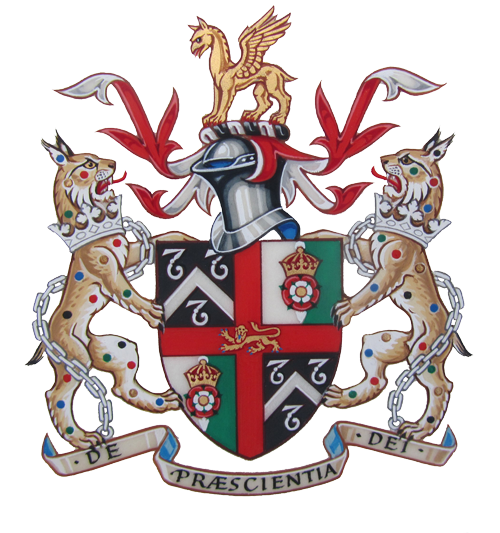On this day in 1545, surgeon Robert Balthrop (1522-1591) was admitted to the Freedom of the Company of Barbers and Surgeons of London. The son of Richard Balthrop, ‘midwife’ to Jane Seymour, he had been apprenticed to Nicholas Alcock, surgeon to Queen Jane’s son Edward VI. Alcock bequeathed to Balthrop in 1550 his “russet worsted gown trimmed with squirrel fur and velvet.” Thomas Vicary, Master in 1540 and Serjeant Surgeon to Henry VIII made his own bequest to Balthrop in 1561 of “my best gowne garded with velvet, furred and faced with Sables, my Cote of braunched velvete, and a sering (syringe) of silver, parcell gilte.”
Balthrop, Master of the Company in 1565 and again in 1573, had a distinguished surgical career and close Royal associations. At the foundation in 1552 of Christ’s Hospital for poor and orphaned children (one of the five Royal London hospitals along with St Bartholomew’s, St Thomas’, Bethlem and Bridewell) he was named as one of two surgeons on the list of staff, at a salary of £13 6s 8d. From around 1562 until his death in 1591 Balthrop held the position of Serjeant Surgeon to Queen Elizabeth I.
Balthrop was born into a well-to-do family and amassed a fortune and possessions of his own, with lands and property in Greenwich. His lengthy will written in November 1591 detailed a number of bequests to the Company and fellow members including silver, £5 for a dinner after his burial, £5 for the poor of the Company, surgical equipment and his extensive collection of medical books. He notably made provision for members of the Company who did not understand Latin by bequeathing his own English translations:
“unto the companie of the Barbors and Chirurgeons of the Cittie of London the Chirurgery of that most excellent writer John Tagaultius the lattin booke and also the English translation that I have made thereof And also the Chirurgerie of the expert and perfect practitioner Ambrose Parey both which workes I have written into Englishe for the love that I owe unto my bretheren practisinge Chirurgerie and not understandinge the latin Tounge and given them into the Hall for theire Dayly use and Readinge both in lattin and Englishe and Desiringe that they may be kept faire and cleane for my sake which wish them all prosperous and good successe in theire workes and endevours whatsoever they take in hande to the glory of God and the advauncemente of the Arte.”

Robert Balthrop was buried in St Bartholomew the Less, where his memorial can still be seen. It reads:
Here Robert Balthrope lyes intombd, to Elizabeth our Queene,
Who Sergeant of the Surgeons sworne neere thrtye yeeres hathe beene.
He died at syxtie nine of yeeres December’s ninthe the daye
The yeere of Grace eight hundred twice deductinge nine a waye
Let heere his rotten bones repose, till angells trompet sounde,
To warne the worlde of present chaunge, and raise the deade from grounde.
VIVIT POST FUNERA VIRTUS

Further reading:
Biography of Robert Balthrop in The Annals of the Barber Surgeons of London, Young, Sidney: Available to read online here
Jenkins, Gary (2021) Christ’s Hospital and the poor of London, 1552-1666. [Thesis] (Unpublished). Available to read online here
